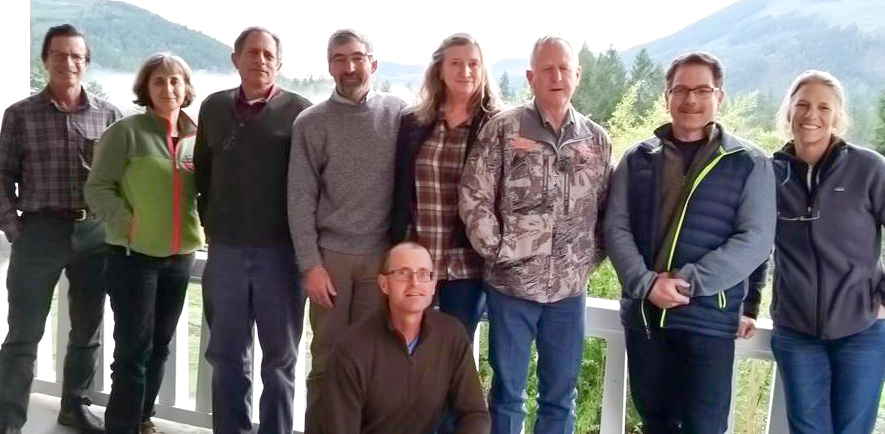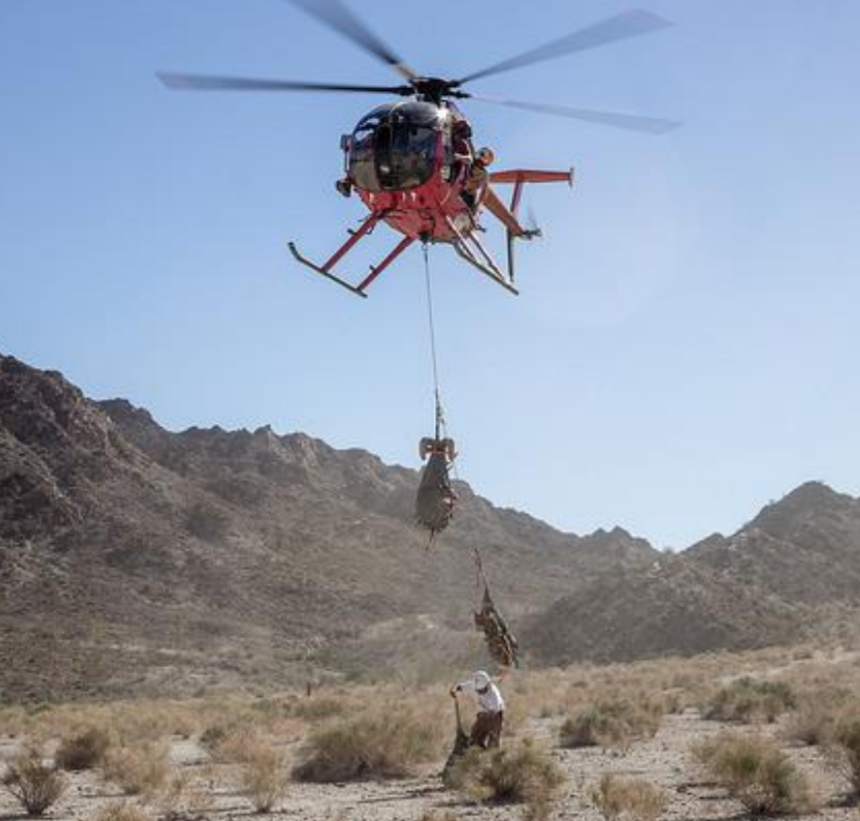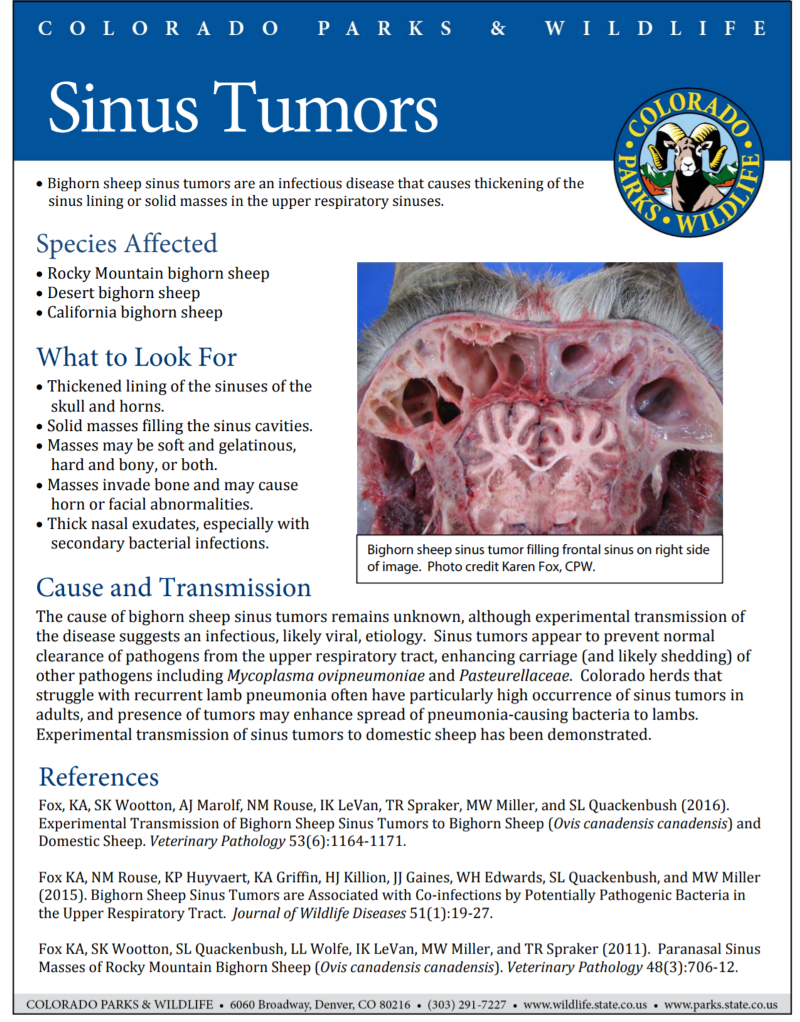WSWG's Disease Management Venture
Adaptive West-Wide Wild Sheep Disease Management
Respiratory disease remains the biggest impediment to restoring and sustaining bighorn sheep populations. Based on a west-wide survey of all wildlife agencies, over 175 disease events were documented since the 1970s in 17 of the 20 jurisdictions with losses of over 14,000 adult bighorn. Over 75 herds experienced 3 or more years of poor lamb recruitment post disease event and 20 herds having 10 or more years of high lamb mortality.
In 2015, the Wild Sheep Disease Management Venture (DMV) was established by the Western Association of Fish & Wildlife Agencies (WAFWA) Wild Sheep Working Group (WSWG) to identify management challenges associated with these respiratory disease events and collaboratively develop solutions to these challenges.
Wild Sheep Disease
ADAPTIVE MANAGEMENT STATEGIES
Talking Poing
WILD SHEEP RESPIRATORY DISEASE
The DMV acknowledges that the respiratory disease is polymicrobial involving Mycoplasma ovipneumoniae, Pasteurellaceae spp., viruses, and other emerging factors (e.g., paranasal sinus tumors). Initial spillover of the primary pathogen agent occurs via contact with domestic sheep or goats and can subsequently be circulated by wild sheep or mountain goats. Following spillover into a bighorn herd several different outcomes have been documented, ranging from little to no impact on health and recruitment to epizootic pneumonia, followed by years of lamb deaths caused by pneumonia. This variable pattern has defined the key question for the DMV: What contributes to this variation in herd response to respiratory disease and how can management actions improve herd performance?
To aid jurisdictions in addressing this key question the mission of the DMV is to work collaboratively to:
- Improve and speed collective learning on respiratory disease and herd response
- Be a source of guidance and expertise
- Be a clearinghouse for information sharing among jurisdictions and researchers
- Facilitate the evaluation of adaptive management actions
- Encourage jurisdictions to explore new management actions
- Seek funding to support enhanced monitoring and adaptive management trials
- Summarize outcomes of management actions and identify those that have the most promise of improving herd performance
Committee Meetings
- Agenda & Notes, Oct 2015 (PDF, 241 KB)
- Agenda & Notes, Nov 2016 (PDF, 190 KB)

DMV Steering Committee 2016. (left to right) Dr. Tom Besser – WSU, Dr. Frances Cassirer- ID, Rich Harris – WA, Hank Edwards – WY, Dr. Helen Schwantje – BC, Clay Brewer – WSF, Dr. Craig Stephen – facilitator with National Collaborating Centre for Infectious Diseases, Dr, Peri Wolff – NV, and Mike Cox – NV (kneeling). Not in the photo: Dr. Mike Miller – CO, Rusty Robinson – UT, Dr. Emily Almberg – MT, and Dr. Karen Fox – CO.
FEATURE
Emerging Diseases
Bighorn sheep sinus tumors
An infectious disease that causes thickening of the sinus lining or solid masses in the upper respiratory sinuses. Learn about this disease and why it’s important:
Learn About: Herd Response and Pathogen Variables
Flowcharts of Herd Response and Pathogen Variables
To help evaluate and visualize the relationship of herd history, performance, disease risk, and pathogens to sample, several flowcharts exist to help wild sheep managers and veterinarians appreciate and categorize wild sheep herds for surveillance and adaptive management actions.
Candidate Herds
Test and Cull Experiments
SPOTLIGHTS
Research
Updates on respiratory disease affecting desert bighorn sheep
in and near Mojave National Preserve
National Park Service, April 2016 by Clinton W. Epps, Daniella Dekelaita, and Brian Dugovich
Desert bighorn sheep (Ovis canadensis nelsoni) are an iconic mammal of the desert southwest and are found in small mountain ranges scattered across Mojave National Preserve (Preserve) and nearby desert habitats in southeastern California. In many areas, they are the only large native herbivore that can persist, inhabiting places that are too hot, dry, and sparsely vegetated for deer. Read the Research

Presentations
Presentations
- M. ovi in Alaska update – Kimberleee Beckmen – Jan 2020
- M. ovi Strain Virulence subcommittee – Kezia Manlove – Jan 2020
- Hells Canyon Bighorn Test & Remove – Francis Cassirer – Jan 2020
- Beginnings of the West-wide Adaptive Wild Sheep DMV – Jul 2018
- 2016 WAFWA Summer Meeting – DMV Update
- Super Spreaders and Disease Persistence in Bighorn Sheep
- Bighorn Sheep Respiratory Disease Modelling – Management Strategies
- Pneumonia Disease Process in Bighorn Sheep with Nevada Examples
